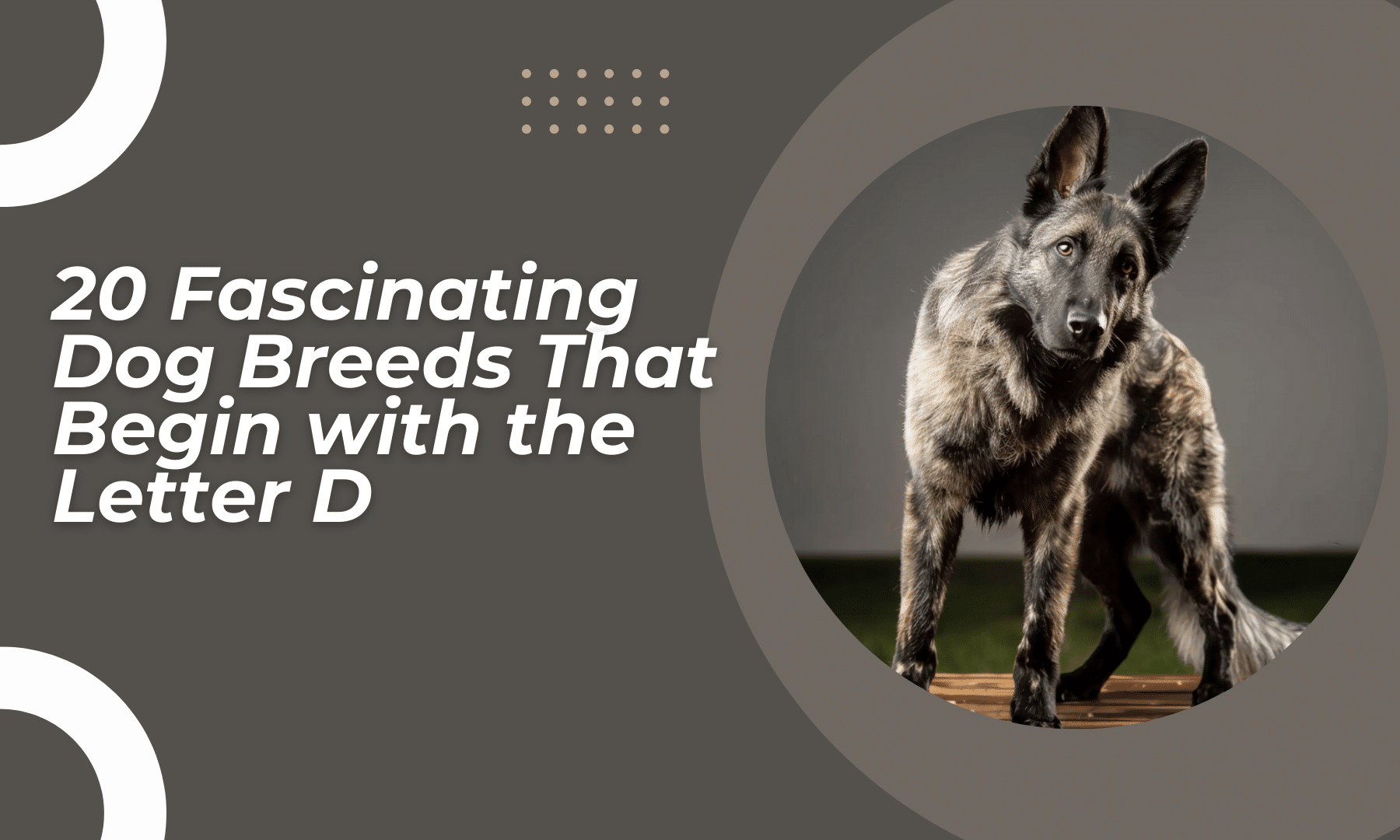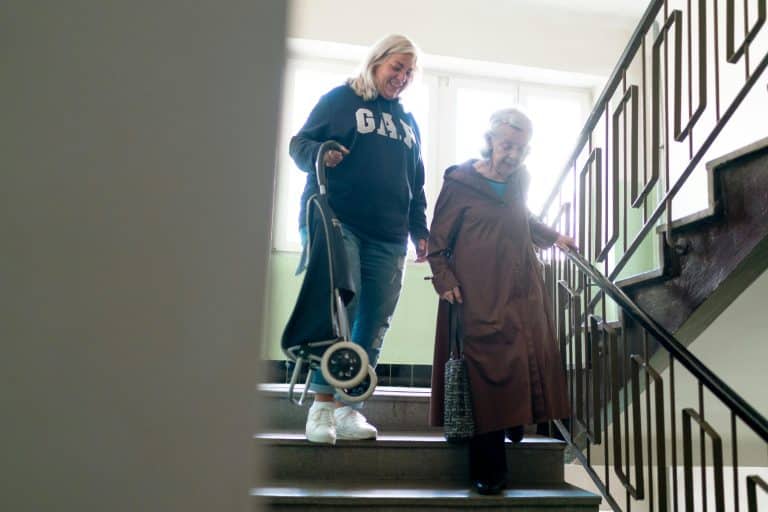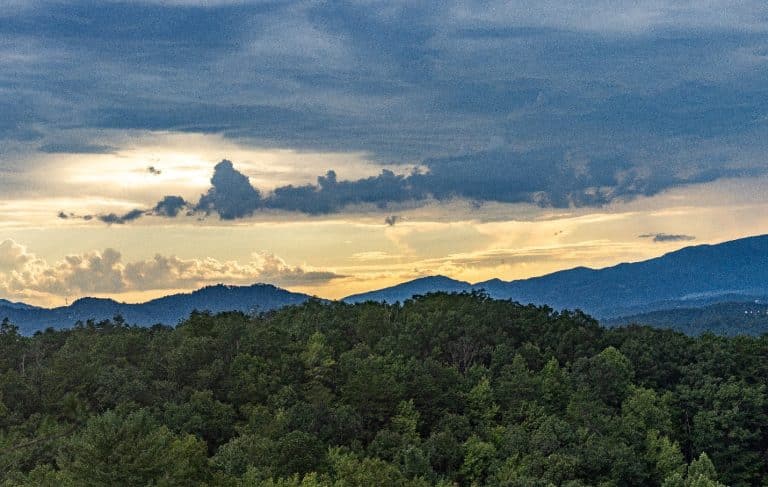20 Dog Breeds That Begin with the Letter D
Dog lovers, are you fascinated by the incredible variety of canine companions? From tiny lapdogs to massive guardians, the world of dogs is full of surprises.
If you’re curious about the unique breeds that start with the letter “D,” you’re in for a treat!
In this blog post, we’ll introduce you to 20 compelling dog breeds, showcasing the diversity and charm of our furry friends.
From the iconic Dalmatian to the lesser-known Drentsche Patrijshond, you’ll find a range of temperaments, sizes, and histories that will leave you in awe.
Get ready to expand your knowledge and fall in love with these delightful “D” breeds as we explore their origins, characteristics, and what makes each of them so special.
Dog Breeds with ‘D’
1. Dachshund

Origin and History
The Dachshund, often affectionately called the “wiener dog,” originated in Germany.
Bred to hunt badgers and other burrowing animals, its long, low body and short legs allowed it to navigate through narrow underground tunnels easily.
Over time, it was also used for hunting rabbits and foxes and eventually became a popular companion dog.
Physical Characteristics
| Characteristic | Description |
|---|---|
| Height | 5-9 inches (standard), 5-6 inches (miniature) |
| Weight | 16-32 pounds (standard), under 11 pounds (miniature) |
| Coat | Smooth, Wirehaired, or Longhaired |
| Color | Variety (e.g., black, red, chocolate, tan, cream) |
| Notable Physical Features | Long body, short legs, prominent snout |
Temperament and Behavior
Dachshunds are known for their lively, playful, and curious nature.
They are loyal to their families but can sometimes be stubborn, requiring patience and consistent training.
Due to their hunting background, they may have a high prey drive and enjoy digging.
Dachshunds generally get along well with children and other pets when socialized properly.
2. Dalmatian

Origin and History
The Dalmatian’s exact origins are uncertain, but the breed is believed to have originated in the historical region of Dalmatia, in present-day Croatia.
They were used as coach dogs, running alongside horse-drawn carriages to protect the horses and guard the coach’s contents.
Later, they became associated with firehouses, where they served as firehouse dogs and mascots.
Physical Characteristics
| Characteristic | Description |
|---|---|
| Height | 19-24 inches |
| Weight | 45-70 pounds |
| Coat | Short, dense, and fine |
| Color | White with black or liver spots |
| Notable Physical Features | Spotted coat, muscular build |
Temperament and Behavior
Dalmatians are friendly, energetic, and intelligent dogs.
They are loyal to their families and good with children when well-socialized.
As a high-energy breed, they require plenty of exercise and mental stimulation to prevent destructive behaviors.
Dalmatians are also known for their strong guarding instincts and may be reserved around strangers.
3. Dandie Dinmont Terrier
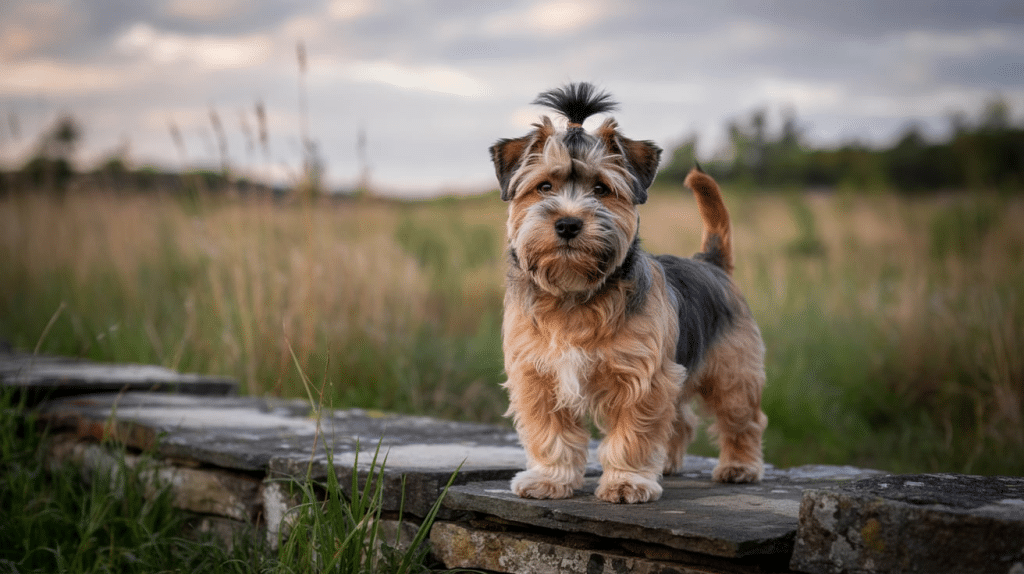
Origin and History
The Dandie Dinmont Terrier originated in the border regions of Scotland and England in the 1700s.
Named after a character in Sir Walter Scott’s novel “Guy Mannering,” these small terriers were bred to hunt otters, badgers, and other small game in the rough terrain of the Scottish borders.
Physical Characteristics
| Characteristic | Description |
|---|---|
| Height | 8-11 inches |
| Weight | 18-24 pounds |
| Coat | Crisp texture, a combination of hard and soft hair |
| Color | Pepper (light silver to dark blue-black) or mustard (reddish-brown to pale fawn) |
| Notable Physical Features | Distinctive ‘top-knot’ of hair on the head, large eyes |
Temperament and Behavior
Dandie Dinmont Terriers are independent, intelligent, and affectionate dogs. They are loyal to their families but may be reserved with strangers.
As terriers, they have a strong prey drive and enjoy digging and exploring.
When socialized properly, they are generally good with children and other dogs but may chase smaller pets due to their hunting instincts.
4. Danish-Swedish Farmdog
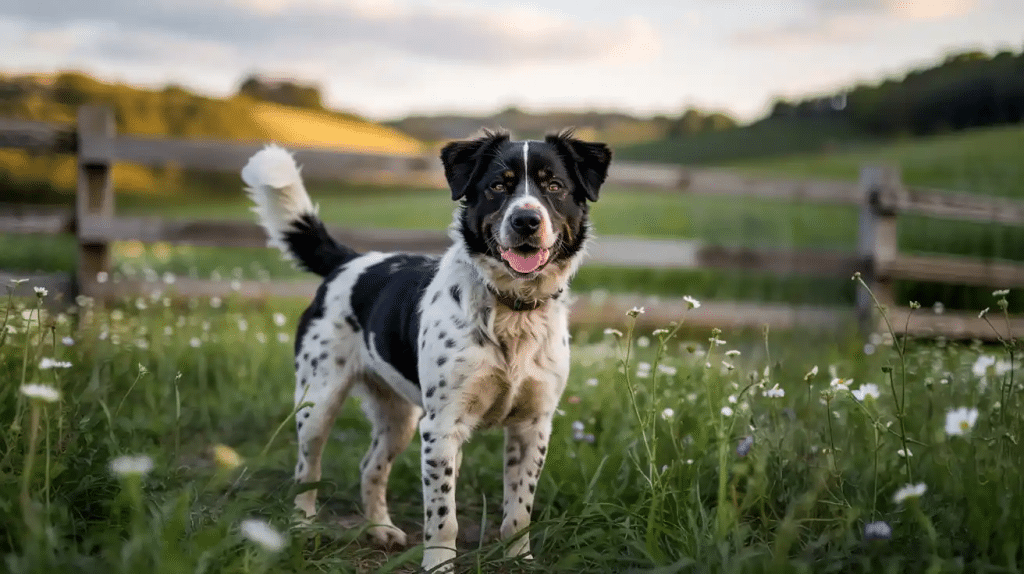
The Danish-Swedish Farmdog, as the name suggests, originated in Denmark and Sweden as a versatile farm dog.
These small, agile dogs were used for various tasks, such as catching rats, herding livestock, and serving as farm watchdogs.
Physical Characteristics
| Characteristic | Description |
|---|---|
| Height | 12-14.5 inches |
| Weight | 15-20 pounds |
| Coat | Short and smooth |
| Color | White with black or brown markings |
| Notable Physical Features | Compact body, alert expression, pricked ears |
Temperament and Behavior
Danish-Swedish farmdogs are friendly and adaptable dogs.
They are intelligent and eager to please, making them easy to train.
When socialized properly, they get along well with children and other pets.
As a working breed, they require regular exercise and mental stimulation to stay happy and healthy.
5. Denmark Feist
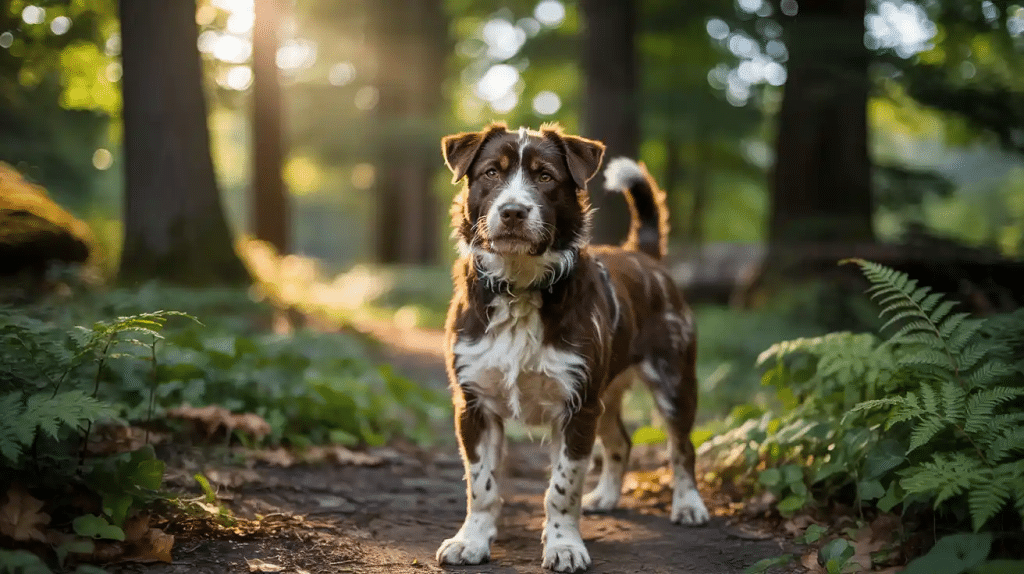
Origin and History
The Denmark Feist originated in the United States, specifically in the state of Virginia, in the early 20th century.
These small hunting dogs were bred to hunt small game, such as squirrels and rabbits, in the dense forests of the Appalachian Mountains.
Physical Characteristics
| Characteristic | Description |
|---|---|
| Height | 10-18 inches |
| Weight | 15-30 pounds |
| Coat | Short and smooth |
| Color | Tricolor (white, black, and tan) or bicolor with white as a primary color |
| Notable Physical Features | Lean and muscular build, the tail may be docked |
Temperament and Behavior
Denmark Feists are loyal dogs. They have a strong prey drive and love to chase and hunt small game.
They are affectionate with their families but may be reserved with strangers.
As a hunting breed, they require regular exercise and mental stimulation to prevent boredom and destructive behaviors.
6. Dingo
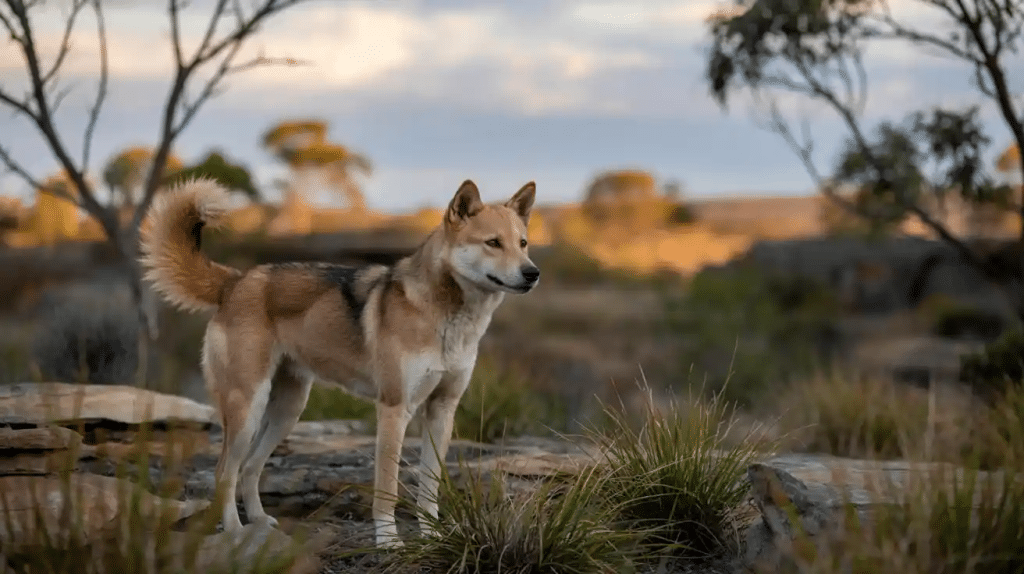
Origin and History
The Dingo is a wild dog native to Australia, believed to have arrived on the continent around 3,500-4,000 years ago with human settlers from Southeast Asia.
They quickly adapted to the Australian environment and played a significant role in Aboriginal culture.
Physical Characteristics
| Characteristic | Description |
|---|---|
| Height | 19-23 inches |
| Weight | 29-44 pounds |
| Coat | Short, dense |
| Color | Ginger or reddish can also be sandy, black and tan, or white |
| Notable Physical Features | Naturally lean, athletic build, large ears |
Temperament and Behavior
Dingoes are intelligent, independent, and highly adaptable. In the wild, they live in packs with a strict social hierarchy.
They are generally shy and cautious around humans but can be curious and opportunistic when seeking food.
As wild animals, they have strong hunting instincts.
7. Doberman Pinscher

Origin and History
The Doberman Pinscher originated in Germany in the late 19th century, developed by Karl Friedrich Louis Dobermann, a tax collector who sought to create a protective companion.
The breed has been refined over the years, incorporating various breeds, such as the German Pinscher, Rottweiler, and Greyhound.
Physical Characteristics
| Characteristic | Description |
|---|---|
| Height | 24-28 inches |
| Weight | 60-100 pounds |
| Coat | Short, smooth, and hard |
| Color | Black, red, blue, or fawn with rust markings |
| Notable Physical Features | Energetic, muscular build, cropped ears (traditionally), docked tail |
Temperament and Behavior
Doberman Pinschers are intelligent, loyal, and fearless.
They are known for their protective nature and make excellent guard dogs.
They can be gentle and affectionate with their families with proper training and socialization. They require regular exercise and mental stimulation to prevent boredom and destructive behaviors.
8. Dogo Argentino
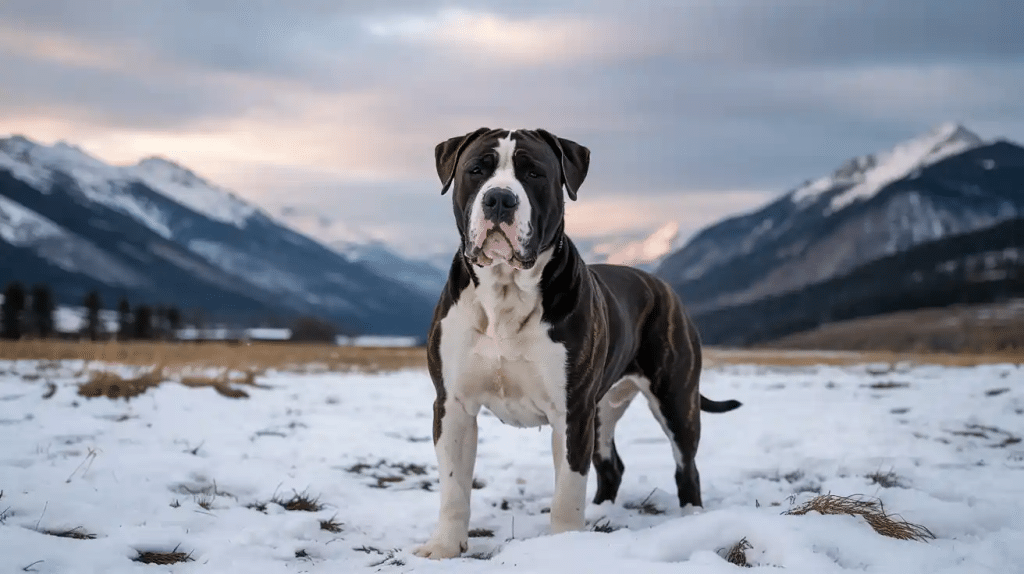
Origin and History
The Dogo Argentino, also known as the Argentine Mastiff, was developed in Argentina in the 1920s by Dr. Antonio Nores Martínez.
The breed was created by crossing various breeds, including the Cordoba Fighting Dog, Great Dane, and Spanish Mastiff, to produce a strong, courageous hunting dog.
Physical Characteristics
| Characteristic | Description |
|---|---|
| Height | 24-27 inches (males), 23-26 inches (females) |
| Weight | 88-100 pounds |
| Coat | Short, smooth |
| Color | White |
| Notable Physical Features | Powerful, muscular body, distinctive white coat |
Temperament and Behavior
Dogo Argentinos are loyal, courageous, and assertive dogs.
They have a strong prey drive and excel in hunting big game. They are protective of their families but can be reserved with strangers.
Proper training and socialization are essential to ensure they develop into well-rounded, obedient companions.
9. Dogo Guatemalteco
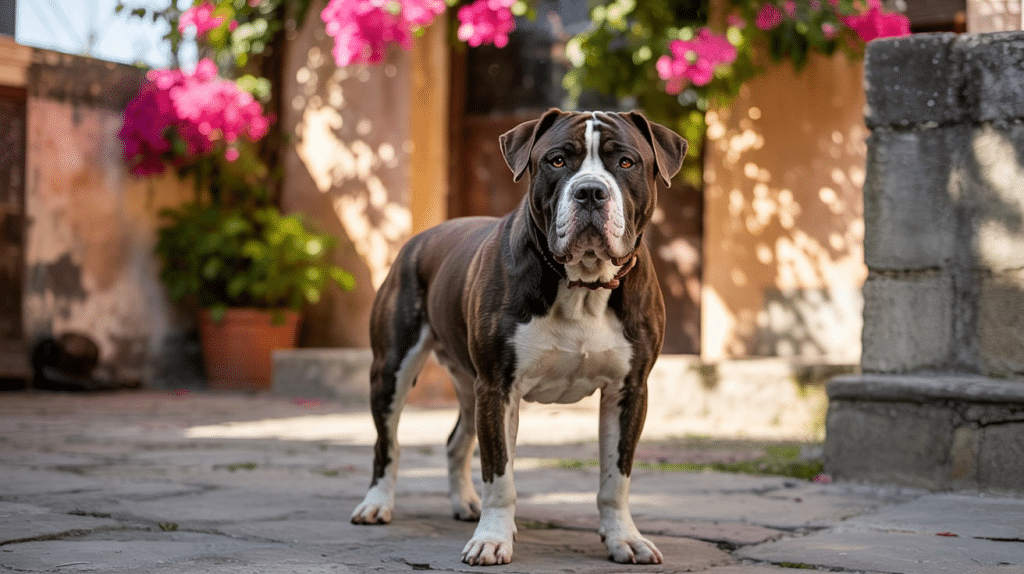
Origin and History
The Dogo Guatemalteco, also known as the Guatemalan Bulldog, originated in Guatemala as a descendant of the extinct Old English Bulldog.
The breed was developed for guarding and protecting farms and dog fighting, which is now illegal in many countries.
Physical Characteristics
| Characteristic | Description |
|---|---|
| Height | 20-26 inches |
| Weight | 40-75 pounds |
| Coat | Short, smooth |
| Color | Brindle, fawn, or black with or without white markings |
| Notable Physical Features | Muscular build, square head, alert expression |
Temperament and Behavior
Dogo Guatemaltecos are confident, brave, and loyal dogs.
They have a strong protective instinct and can be wary of strangers. Early socialization and consistent training are crucial to ensure they develop into well-behaved companions.
They require regular exercise and mental stimulation.
10. Dogo Sardesco

Origin and History
The Dogo Sardesco, also known as the Sardinian Mastiff, is a rare breed from the Italian island of Sardinia.
The breed was developed for hunting wild boar and guarding livestock and property.
Physical Characteristics
| Characteristic | Description |
|---|---|
| Height | 21-26 inches |
| Weight | 66-100 pounds |
| Coat | Short to medium, dense |
| Color | Black, grey, fawn, brindle |
| Notable Physical Features | Robust and agile with a strong jaw |
Temperament and Behavior
Dogo Sardescos are loyal, brave, and independent dogs.
They have a strong prey drive and require consistent training and socialization to ensure they are well-behaved around other animals and people.
They are protective of their families and can be reserved with strangers.
11. Dogue Brasileiro

Origin and History
The Dogue Brasileiro, also known as the Brazilian Mastiff, is a rare breed that was developed in Brazil.
The breed’s exact origins are unclear, but it is believed to have descended from English Mastiffs and Bulldogs brought to Brazil by European settlers.
Physical Characteristics
| Characteristic | Description |
|---|---|
| Height | 20-23 inches |
| Weight | 40-90 pounds |
| Coat | Short, smooth |
| Color | White with patches of any color except solid black |
| Notable Physical Features | Strong and muscular, broad chest |
Temperament and Behavior
Dogue Brasileiros are loyal, courageous, and confident dogs.
They have a strong protective instinct and require early socialization and consistent training to ensure they are well-behaved around people and other animals.
They are affectionate with their families but can be wary of strangers.
12. Dogue de Bordeaux
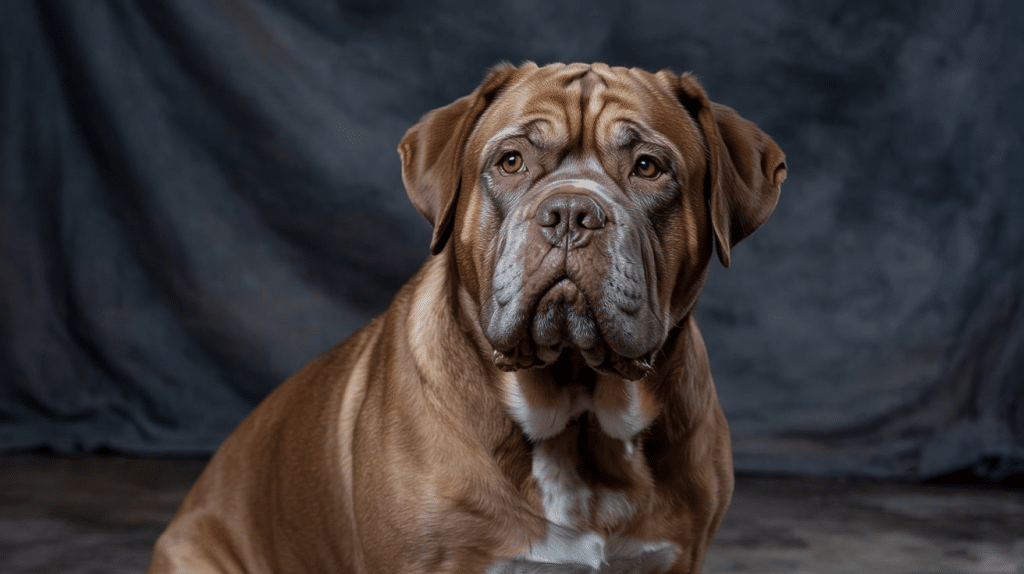
Origin and History
The Dogue de Bordeaux originated in France, also known as the French Mastiff or Bordeaux Mastiff.
The breed was developed for guarding, hunting, and fighting and has a history dating back to the 14th century.
Physical Characteristics
| Characteristic | Description |
|---|---|
| Height | 23-27 inches |
| Weight | 99-110 pounds |
| Coat | Fine, short, soft to the touch |
| Color | Fawn, with a red or mahogany mask |
| Notable Physical Features | Massive head, stocky and muscular |
Temperament and Behavior
Dogue de Bordeaux are loyal, courageous, and affectionate dogs.
They have a strong protective instinct and require early socialization and consistent training to ensure they are well-behaved around people and other animals.
They are gentle with their families but can be wary of strangers.
13. Drentse Patrijshond
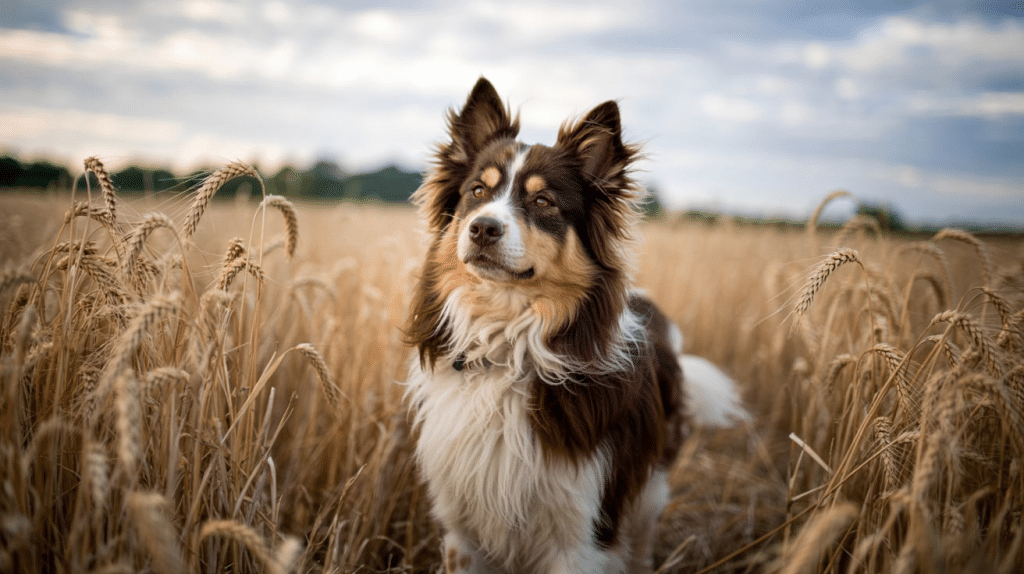
Origin and History
The Drentse Patrijshond, also known as the Dutch Partridge Dog, originated in the Dutch province of Drenthe.
The breed was developed in the 16th century for hunting partridges and other small game birds.
Physical Characteristics
| Characteristic | Description |
|---|---|
| Height | 21-25 inches |
| Weight | 40-60 pounds |
| Coat | Long, dense, and wavy |
| Color | White with brown or orange markings |
| Notable Physical Features | Feathered tail, expressive eyes |
Temperament and Behavior
Drentse Patrijshonds are gentle, friendly, and intelligent dogs.
They have a strong hunting instinct and excel in the field. They are affectionate with their families and generally good with children and other dogs.
They require regular exercise and mental stimulation.
14. Drever

Origin and History
The Drever is a Swedish scenthound developed in the early 20th century by crossing several breeds, including the German and Westphalian Dachsbracke.
The breed was created for hunting hares and foxes in the dense forests of Sweden.
Physical Characteristics
| Characteristic | Description |
|---|---|
| Height | 11-16 inches |
| Weight | 32-35 pounds |
| Coat | Short, dense |
| Color | Black, fawn, or red with white markings and sometimes with tan points |
| Notable Physical Features | Long body, short legs, prominent sternum |
Temperament and Behavior
Drevers are friendly, energetic, and determined dogs.
They have a strong hunting instinct and are skilled at tracking scent. They are affectionate with their families and generally good with children and other dogs.
They require daily exercise and enjoy spending time outdoors.
15. Dunker
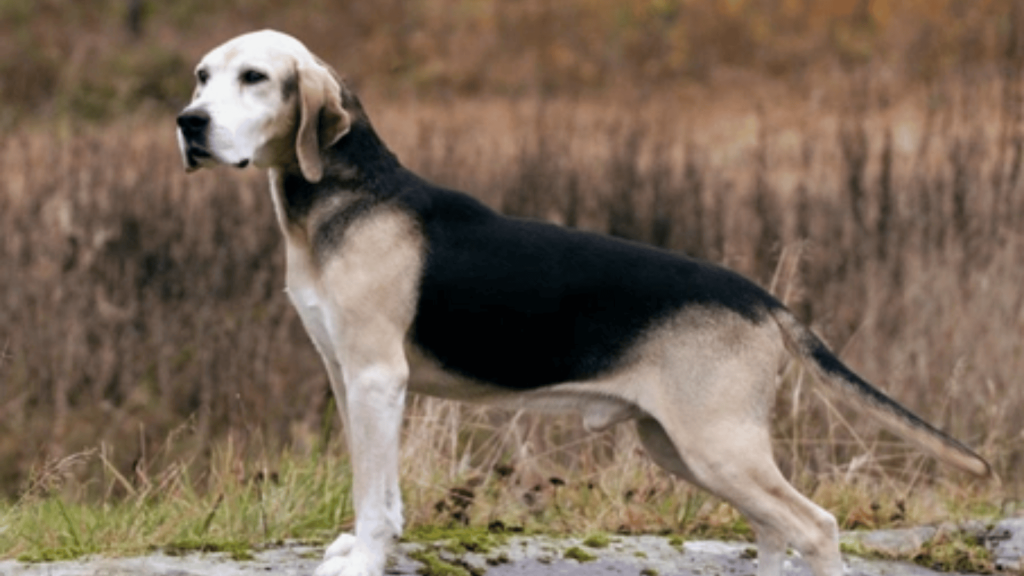
Origin and History
The Dunker, also known as the Norwegian Hound, is a scenthound originating from Norway.
The breed was developed in the 19th century by crossing various hounds, including the Russian Harlequin Hound and the Finnish Hound, to create a skilled hunting dog for Norwegian terrain.
Physical Characteristics
| Characteristic | Description |
|---|---|
| Height | 19-21 inches |
| Weight | 35-44 pounds |
| Coat | Straight, hard, and dense |
| Color | Blue or black marbled with pale fawn and white markings |
| Notable Physical Features | Well-proportioned body, harmonious and balanced appearance |
Temperament and Behavior
Dunkers are independent dogs. They have a strong hunting instinct and excel at tracking scent.
They are affectionate with their families but may be reserved with strangers.
16. Dutch Shepherd
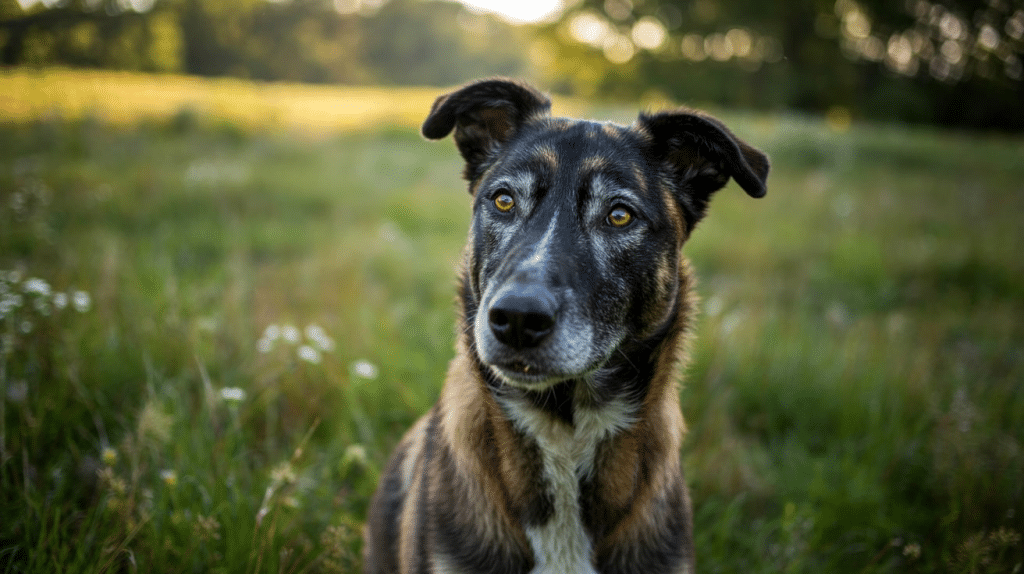
Origin and History
The Dutch Shepherd originated as a versatile herding and guard dog in the Netherlands.
The breed was developed in the late 19th century by shepherds who needed a reliable, intelligent, and hardy dog to help manage their flocks.
| Characteristic | Description |
|---|---|
| Height | 22-25 inches (males), 21-24 inches (females) |
| Weight | 50-70 pounds |
| Coat | Short, long, or rough |
| Color | Brindle |
| Notable Physical Features | Athletic build, intelligent expression, adaptable to various tasks |
Temperament and Behavior
Dutch Shepherds are loyal, intelligent, and protective dogs.
They have a strong work ethic and require regular exercise and mental stimulation.
Early socialization and consistent training are essential for this breed.
17. Dutch Smoushond

Origin and History
The Dutch Smoushond, also known as the Dutch Ratter, is a small breed from the Netherlands.
The breed was developed in the 19th century to catch rats and other vermin on farms and in stables.
Physical Characteristics
| Characteristic | Description |
|---|---|
| Height | 14-17 inches |
| Weight | 20-22 pounds |
| Coat | Rough, wiry |
| Color | Yellow or straw color |
| Notable Physical Features | Shaggy appearance, friendly expression, small but sturdy |
Temperament and Behavior
Dutch Smoushonds are lively, affectionate, and alert dogs. They have a strong prey drive and are skilled at catching small animals.
They are loyal to their families and generally good with kids and other dogs.
18. Danish Broholmer
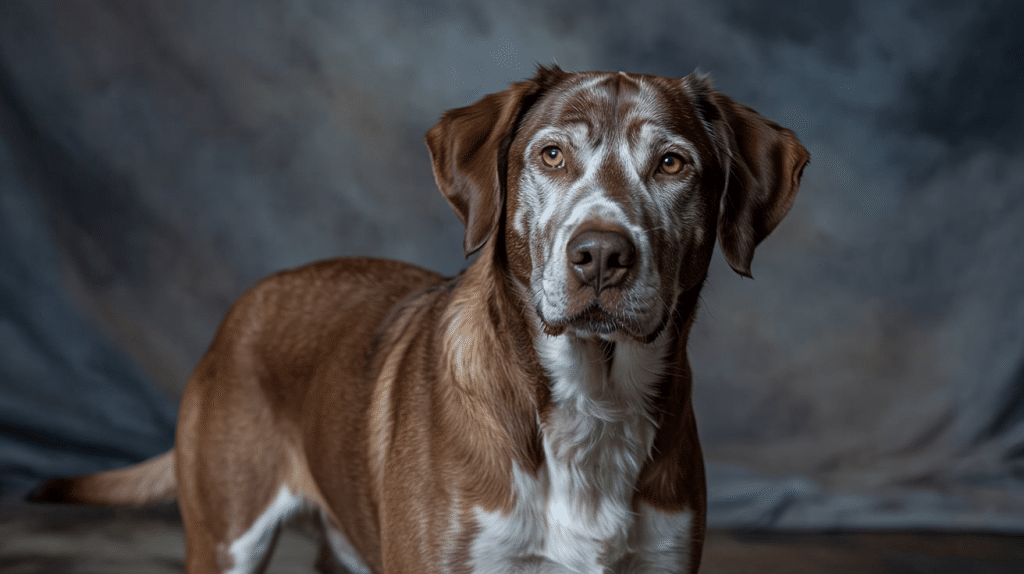
Origin and History
The Danish Broholmer, also known as the Broholmer or Danish Mastiff, is a large breed from Denmark.
It was developed in the 18th century as a guard dog for large estates and manors.
Physical Characteristics
| Characteristic | Description |
|---|---|
| Height | Not standard (Mix breed) |
| Weight | Not standard (Mix breed) |
| Coat | Short to medium, dense |
| Color | White with black or liver spots and blue or red speckling |
| Notable Physical Features | Spotted and speckled coat, athletic build, bright and alert expression |
Temperament and Behavior
Danish Broholmers are calm, friendly, and protective dogs.
They have a strong guarding instinct and require early socialization and consistent training to ensure they are well-behaved around people and other animals.
They are affectionate with their families but may be reserved with strangers.
19. Doxie-Chin

Origin and History
The Doxie-Chin is a relatively new hybrid breed, created by crossing a Dachshund with a Japanese Chin.
The breed was developed in the United States to combine the best traits of both parent breeds.
Physical Characteristics
| Characteristic | Description |
|---|---|
| Height | 27-30 inches (males), 25-28 inches (females) |
| Weight | 90-150 pounds |
| Coat | Short and smooth |
| Color | Fawn or black with a white chest, toes, and tip of the tail |
| Notable Physical Features | Large and powerful, calm and friendly demeanor, imposing stature |
Temperament and Behavior
Doxie-Chins are friendly, playful, and affectionate dogs.
They inherit the lively and curious nature of the Dachshund and the gentle and loving personality of the Japanese Chin.
20. Dalmatian Heeler
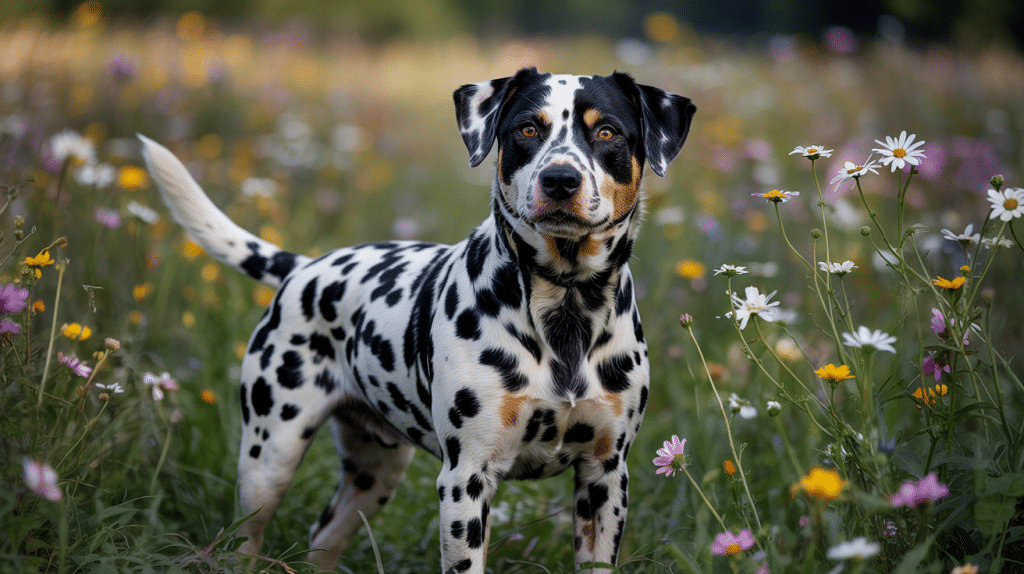
Origin and History
The Dalmatian Heeler is a hybrid breed created by crossing a Dalmatian with an Australian Cattle Dog (also known as a Blue Heeler).
The breed was developed in the United States to combine the best traits of both parent breeds.
Physical Characteristics
| Characteristic | Description |
|---|---|
| Height | Not standard (Mix breed) |
| Weight | Not standard (Mix breed) |
| Coat | It can vary, often medium and silky |
| Color | It can vary and often includes black, brown, white, and tan |
| Notable Physical Features |
A mix of Dachshund and Japanese Chin is a unique combination of features from both breeds. |
Temperament and Behavior
Dalmatian Heelers are energetic and protective dogs.
They inherit the loyal and protective nature of the Dalmatian and the hardworking and independent personality of the Australian Cattle Dog.
Conclusion
Ultimately, the world of dog breeds, beginning with the letter “D,” is filled with fascinating variety and charm.
From the loyal and protective Dutch Shepherd to the lively and affectionate Doxie-Chin, these breeds showcase various characteristics, origins, and roles.
Whether you’re seeking a devoted working partner, a gentle companion, or a playful family pet, a “D” breed can meet your needs.
By understanding their histories, temperaments, and modern-day roles, you can find the perfect match for your lifestyle and provide them with the love, care, and attention they deserve.
So, which “D” breed has stolen your heart?
Share your thoughts and experiences in the comments below!

